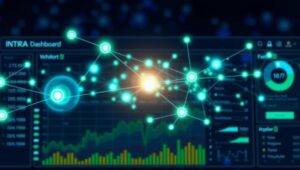The Future of IoT Data Visualization Tools (2025)
The Internet of Things (IoT) is generating massive amounts of data, and the ability to visualize this data effectively is becoming increasingly critical. By 2025, IoT data visualization tools will be more sophisticated, user-friendly, and integrated with advanced analytics capabilities.
Key Trends Shaping the Future of IoT Data Visualization
- AI-Powered Insights: Expect to see more AI-driven tools that automatically identify patterns, anomalies, and trends in IoT data, providing actionable insights without requiring extensive manual analysis.
- Real-Time Visualization: Real-time data visualization will become standard, allowing users to monitor IoT devices and systems in real-time, enabling faster response to critical events.
- Augmented Reality (AR) Integration: AR will play a significant role in overlaying IoT data onto the physical world, providing a more intuitive and immersive understanding of the environment.
- Low-Code/No-Code Platforms: These platforms will democratize access to IoT data visualization, allowing non-technical users to create custom dashboards and reports without coding.
- Edge Computing Visualization: As more data processing moves to the edge, visualization tools will adapt to display data directly from edge devices, reducing latency and bandwidth requirements.
Expected Capabilities of Future IoT Data Visualization Tools
- Advanced Analytics Integration: Seamless integration with machine learning models for predictive maintenance, anomaly detection, and optimization.
- Customizable Dashboards: Highly customizable dashboards that allow users to tailor visualizations to their specific needs and roles.
- Interactive Visualizations: Interactive charts and graphs that enable users to drill down into data, filter results, and explore different perspectives.
- Mobile Accessibility: Mobile-first design with native apps for accessing and interacting with IoT data on smartphones and tablets.
- Enhanced Security: Robust security features to protect sensitive IoT data and ensure compliance with data privacy regulations.
Use Cases Across Industries
- Manufacturing: Real-time monitoring of equipment performance, predictive maintenance, and optimization of production processes.
- Healthcare: Remote patient monitoring, smart hospital management, and predictive analytics for disease outbreaks.
- Transportation: Fleet tracking, traffic management, and predictive maintenance for vehicles and infrastructure.
- Smart Cities: Monitoring of energy consumption, waste management, and public safety systems.
- Agriculture: Precision farming, crop monitoring, and automated irrigation systems.
Conclusion
The future of IoT data visualization is bright, with advancements in AI, AR, and low-code platforms driving innovation. By 2025, these tools will be more powerful, accessible, and integrated with advanced analytics capabilities, enabling organizations to unlock the full potential of their IoT data.




